Ravensthorpe Reservoir
Ravensthorpe Reservoir was built by the Victorians to supply water to Northampton. Today it offers visitors opportunities for walking, fishing and birdwatching. Its isolated location has given it the title of ‘Northamptonshire’s hidden gem’.
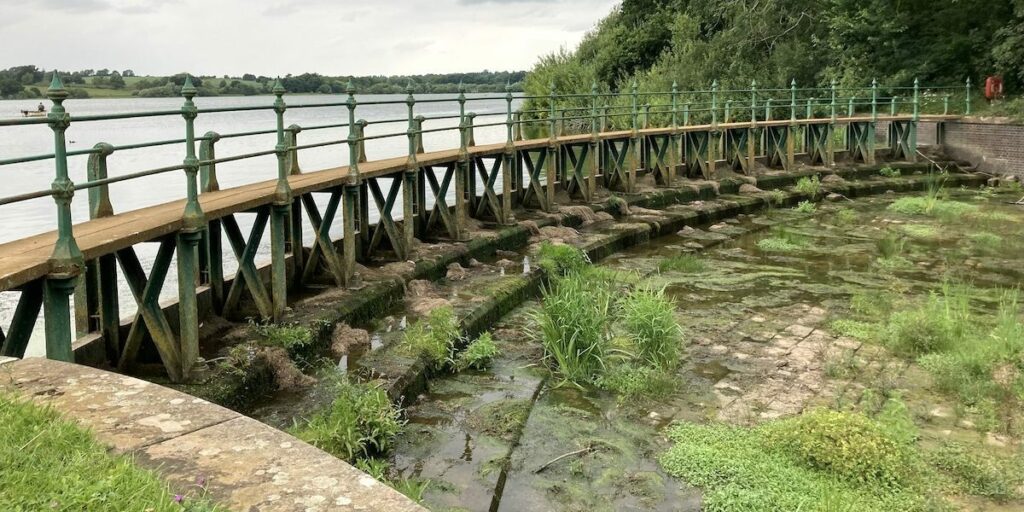
Key info
| Location | Coton Rd, Ravensthorpe, NN6 8RQ |
| County | Northamptonshire |
| Completed | 1890 |
| Commissioned by | Northampton Corporation |
| Maintained by | Anglian Water |
Visiting guide
Open 24 / 7
Free entry
Free car park
Birdwatching
Fishing
What can I expect when visiting Ravensthorpe Reservoir?
Start in the car park, which is located on the northern bank. Head through the gate and follow the path through the woodland along the reservoir. You’ll eventually reach a delightful quarter circular cast iron walkway that crosses the overflow weir.
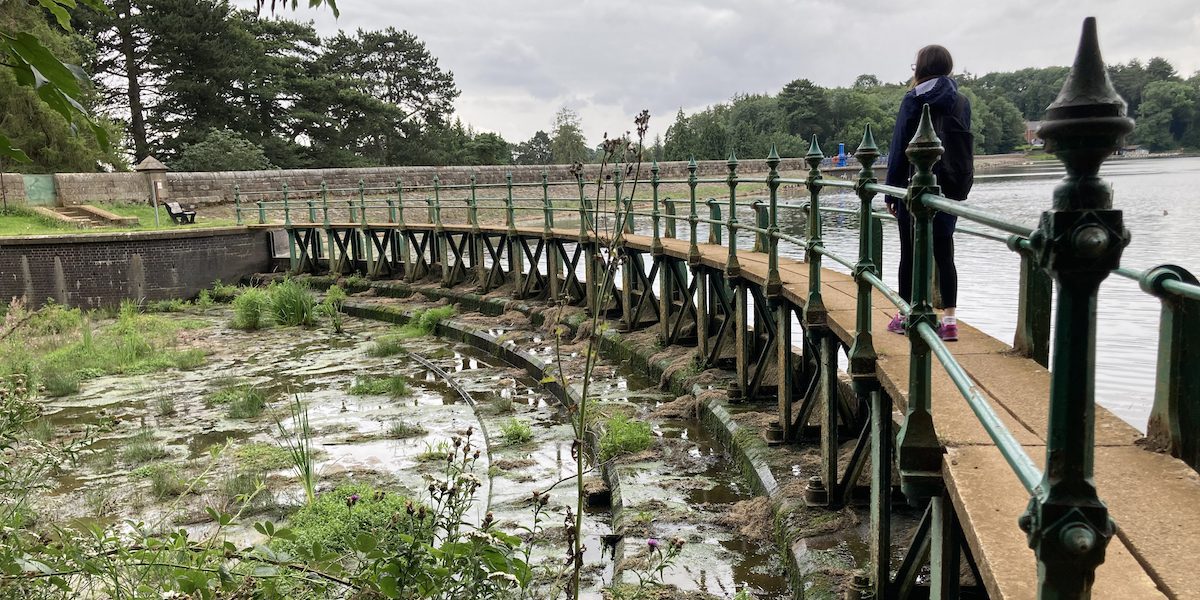
As you walk across, notice the blind gothic arches at the end of the dam wall with brick columns above topped with pyramid capstones. The pipes crossing the weir in the distance deliver pumped water from a nearby river, which also act as a driftwood barrier.
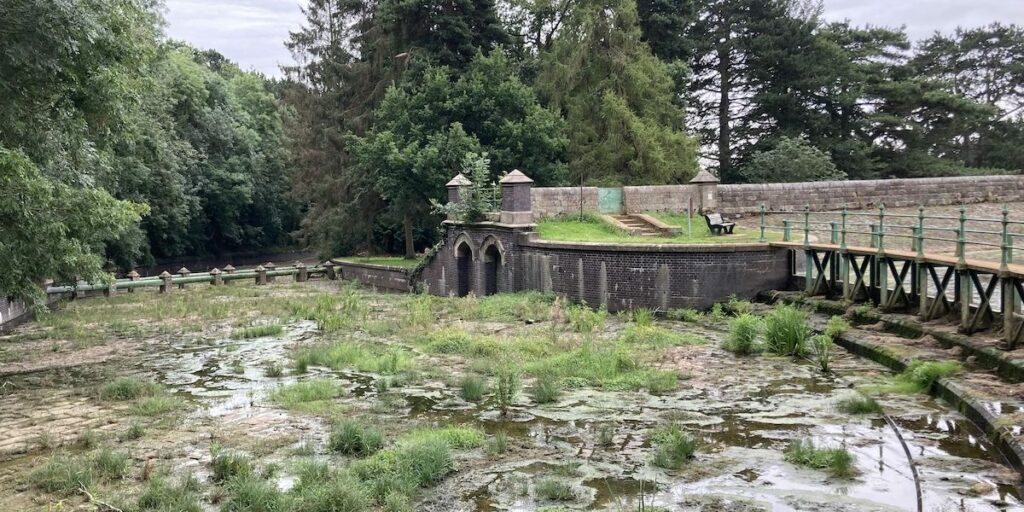
Head through the gate and across the dam wall until you reach the release valve platform a quarter of the way. The hydraulic equipment was manufactured by Glenfield Co of Kilmarnock.
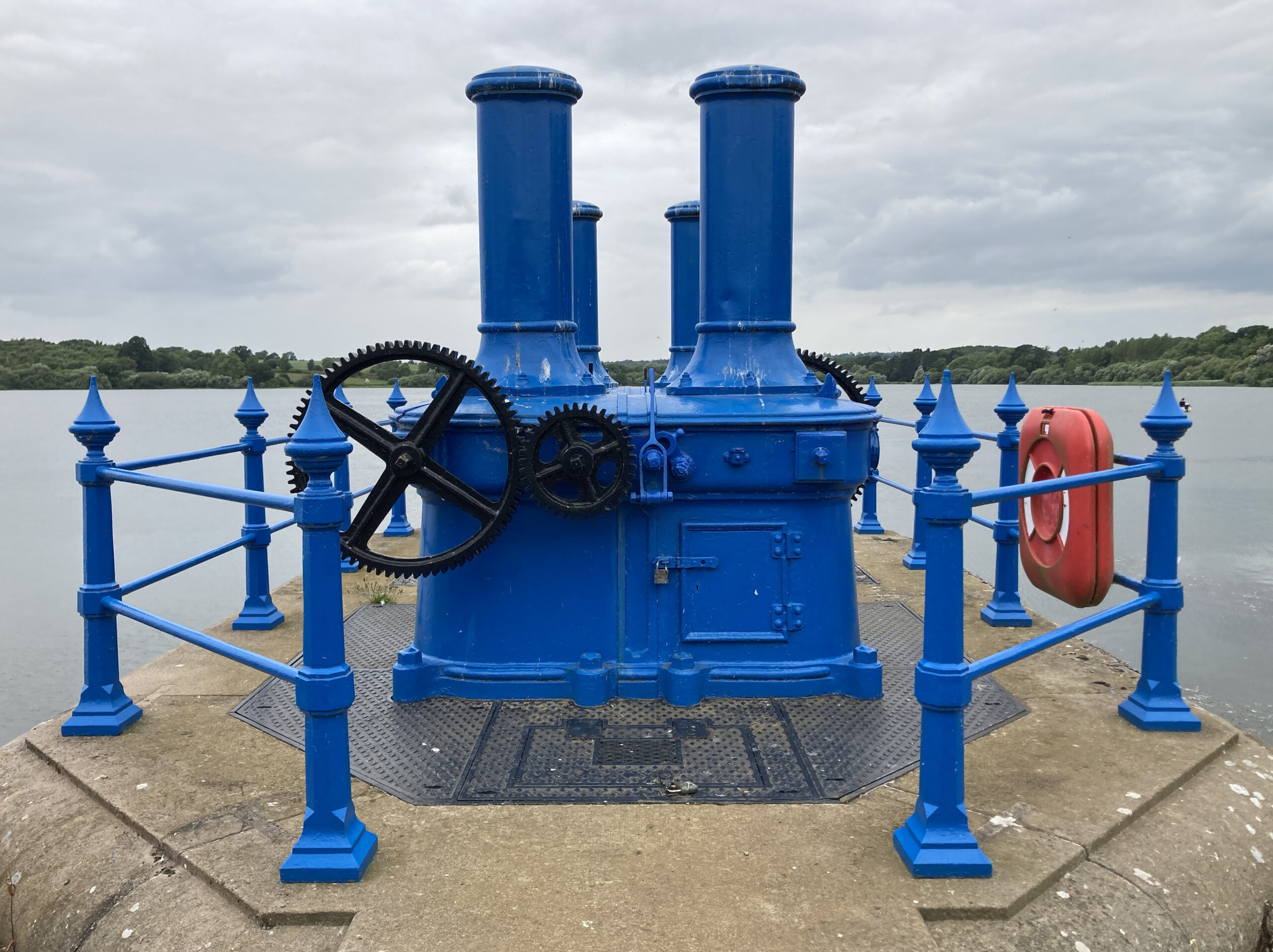
Continue along the dam and avert your attention to the left where you will get a good view of the water treatment works. Notice the old pumping station building and the slow sand filter beds behind with adjacent sand piles.
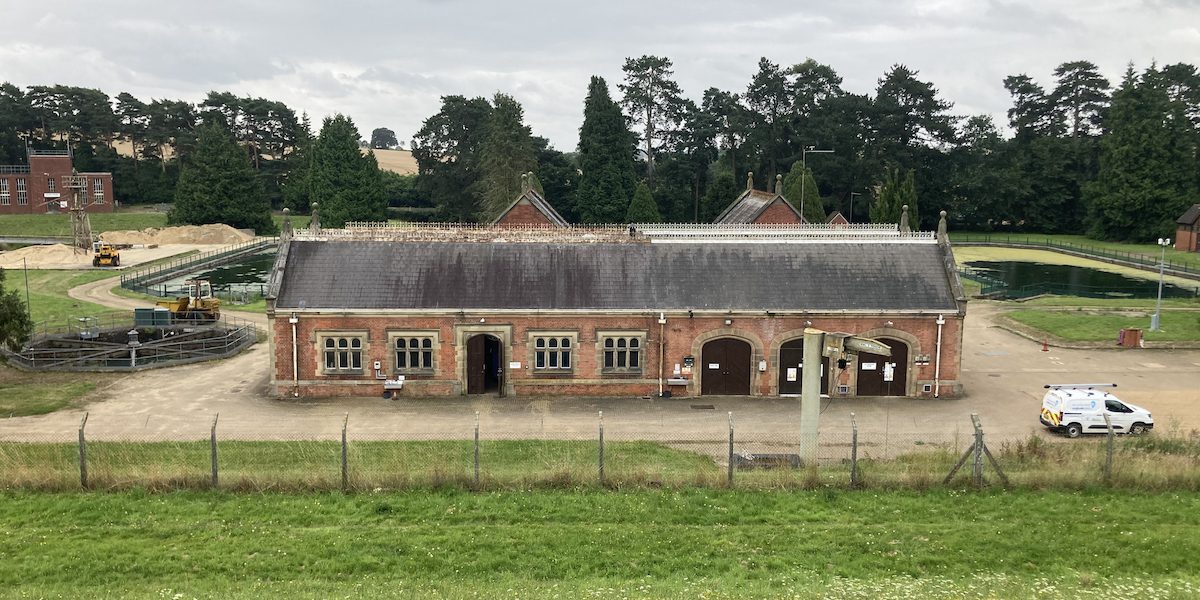
As you continue along the dam, you may be lucky enough to witness a long line of geese and swans. At the end of the dam is the halfway point. You can continue your walk around the reservoir; however, the last leg involves a walk on a country lane that has no pavements or grassy banks; therefore, it is risky considering vehicles drive at speed along this route.
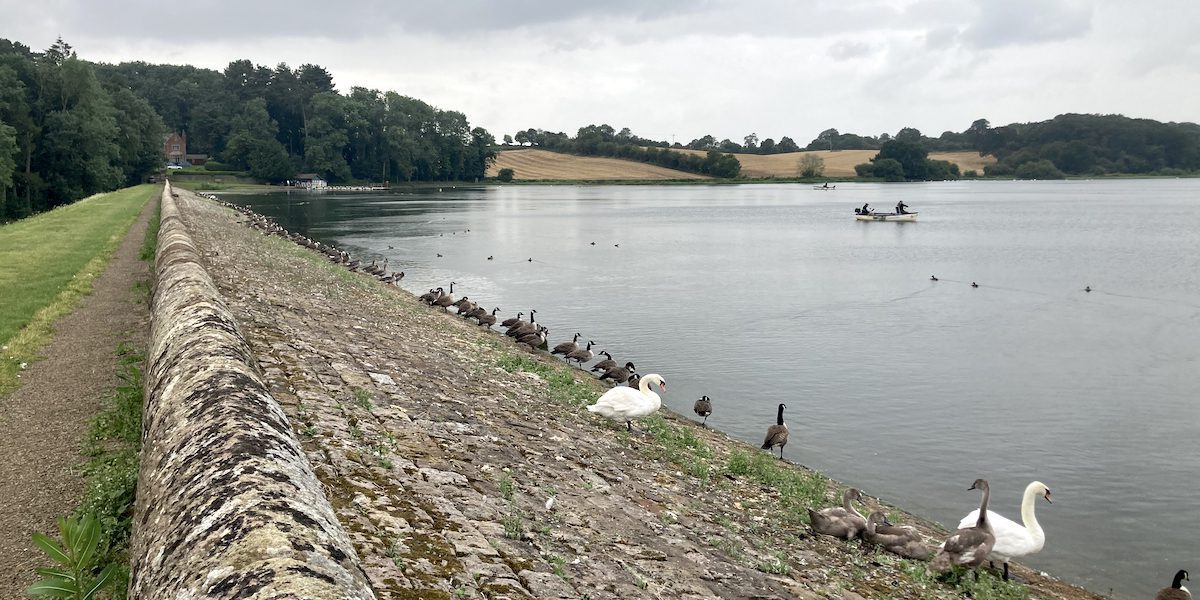
If you prefer not to take this risk, then turn around and retrace your steps back to the car park. If you have no problem with this, then continue following the path behind the fishing lodge and around the reservoir. Look back and you will get a great view of the fishing jetty and the dam in the distance.
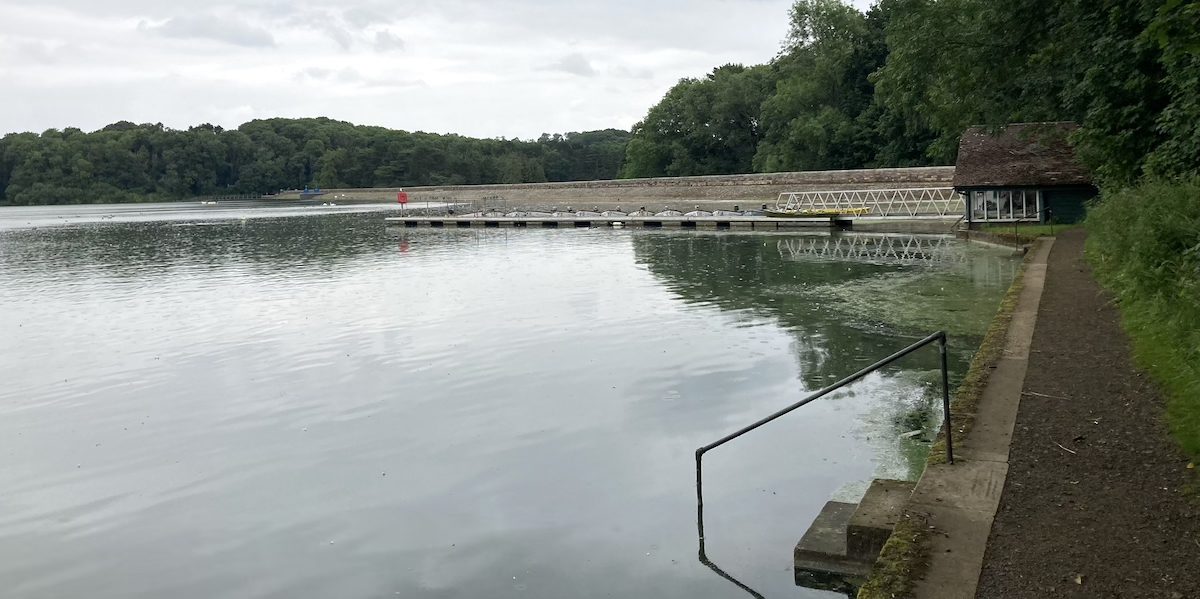
The path terminates at Coton Road. Turn right and walk along the road for a short distance over the reservoir and then take your first right, which will lead you back to the car park.
Can you fish at Ravensthorpe Reservoir?
Fishing licenses are available from the fishing lodge where you can also lease a boat. The reservoir is known for its trout and predator fishing. Monstrous pike lurks in the depths of Ravensthorpe Reservoir. Fish of 40 lbs plus have been caught in most recent years [1]. There are also fishing competitions, check the reservoir’s website for more info.
How long does it take to see Ravensthorpe Reservoir?
It will take you around 1 hour to walk around the reservoir, which gives you enough time to stop and enjoy the view at various points.
What wildlife does Ravensthorpe Reservoir offer?
Ravensthorpe Reservoir is a great place for a spot of birdwatching. As usual, you will find Canada geese, mute swans, and mallard ducks. The site is also home to smew, goldeneye, shoveler, widgeon, and goosander along with great white egrets in winter and osprey, curlew, green and common sandpiper, and Mediterranean gulls appearing in spring and autumn.
Those of you with a sharp eye may also spot otters who feed on the reservoir’s roach and crayfish population as well as badgers, red foxes and muntjac deer. Seven species of bat also make the reservoir their home.
How do I get to Ravensthorpe Reservoir?
Ravensthorpe Reservoir is quite isolated in the Northamptonshire countryside; therefore, a car is the best way to reach it. There is a free car park on the northern bank, which contains a picnic area.
History of Ravensthorpe Reservoir
1837 – Northampton receives its first waterworks constructed by the Northampton Waterworks Company. When more water was required, a series of wells and borings were sunk in an attempt to tap into further resources, which all failed.
1880 – The advice of Thomas Hawksey was sought by Northampton Corporation who had taken on the responsibilities of the Northampton Waterworks Company. After hearing about the experimental wells and borings, Hawksey investigated the streams and valleys near Northampton and recommended the construction of a reservoir near Ravensthorpe.
1885 – Hawksey’s advice was accepted, and construction of the reservoir began.
1890 – The reservoir is completed and to get some water into Northampton as quickly as possible, a trunk main measuring 16 inches in diameter and 10 miles long was laid from the reservoir and connected to an existing service reservoir in the town. The main at Ravensthorpe was also continued to Coton Mill and connected to two small filter beds that were new. Sufficient elevation was achieved to permit a small quantity of filtered water to flow down to Northampton by gravity.
The works at Ravensthorpe originally include three slow sand filters totalling 4,465 square yards in area, which delivered water to a pure water tank with a capacity of 40,000 gallons. The works also contained a pumping station that was originally steam-driven.
1895 – An additional slow sand filter of near equal area was constructed to increase the output of the works.
1907 – A new well was sunk near the present primary filter block and a short heading driven in the Marlstone, connecting to a second well under the pumping station. At the same time, the boiler plant was updated, which included the installation of a triple-expansion steam engine and pump.
1924 – The original pumps are retired.
1937 – The pumps are dismantled.
1939 – Hollowell Reservoir is completed, and a tunnel is constructed which delivers raw water to Ravensthorpe Reservoir.
1940s – As a wartime precaution, a 200 BHP diesel engine was installed as a standby power source for electricity generation. It proved useful in the years after the war when the grid supply was severely strained.
1942 – The original boilers are removed; one was kept as a fuel oil storage tank.
1944 – An additional source of water was brought into use by pumping water from a nearby river into the reservoir through two pipes measuring 21 inches and 18 inches in diameter. These pipes can be seen crossing the overflow weir [2].
1974 – Ownership and management of the reservoir are transferred to the Anglian Water Authority, which was formed as one of ten regional water authorities after the Water Act of 1973 [3].
1989 – Ownership and management of the reservoir are once again transferred to Anglian Water following the privatisation of the water industry in England and Wales.
Dimensions and architecture
| Capacity | 414 million gallons |
| Top water level | 348 ft (106 m) |
| Top water area | 105 acres |
| Dam length | 1284.5 ft (391.5 m) |
The dam is an earthen embankment made from ‘rammel’, a local name for a sandy marl with ironstone. It has a clay puddle core and cut off covered with dry stone pitching on the waterface and sown with grass on the outer slope.
Sources
- Anglia Water (2020) Fishing at Ravensthorpe. Available at: https://anglianwaterparks.co.uk/ravensthorpe-reservoir/fishing (Accessed: 6 August 2021).
- Brown, L. H. (1948) The Ravensthorpe and Hollowell Waterworks of the Northampton Corporation.
- The Anglian Water Authority Constitution Order 1973, c. 1359. Available at: https://www.legislation.gov.uk/uksi/1973/1359/pdfs/uksi_19731359_en.pdf (Accessed: 6 Aug 2021).

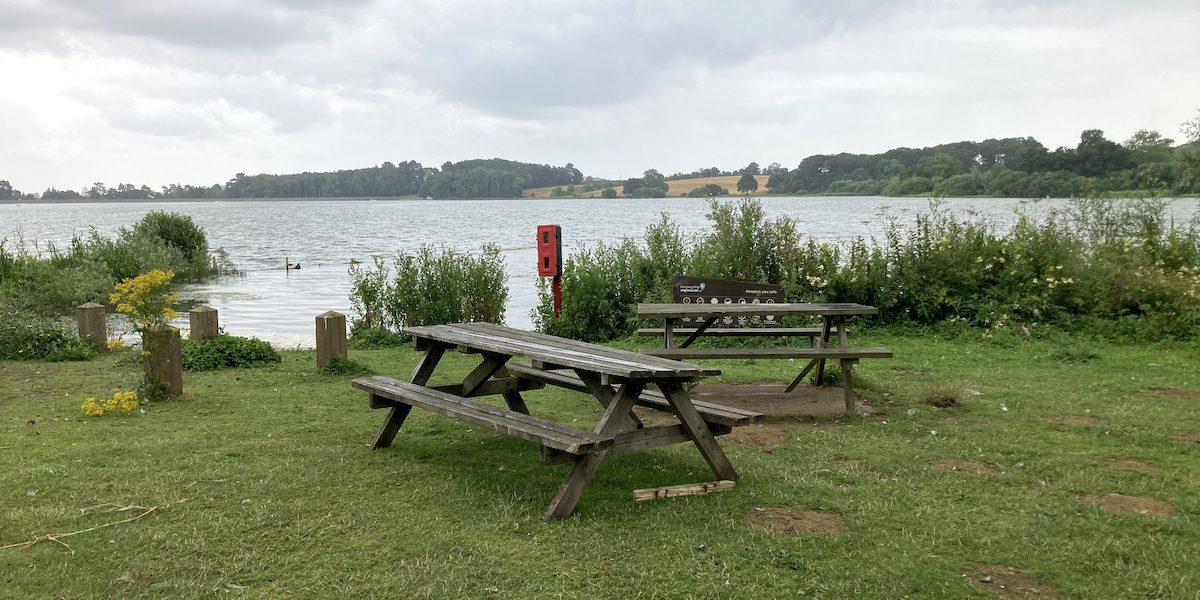
 Elan Valley Aqueduct
Elan Valley Aqueduct